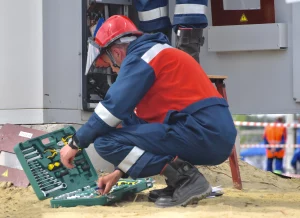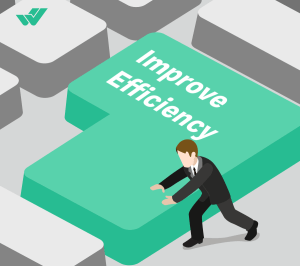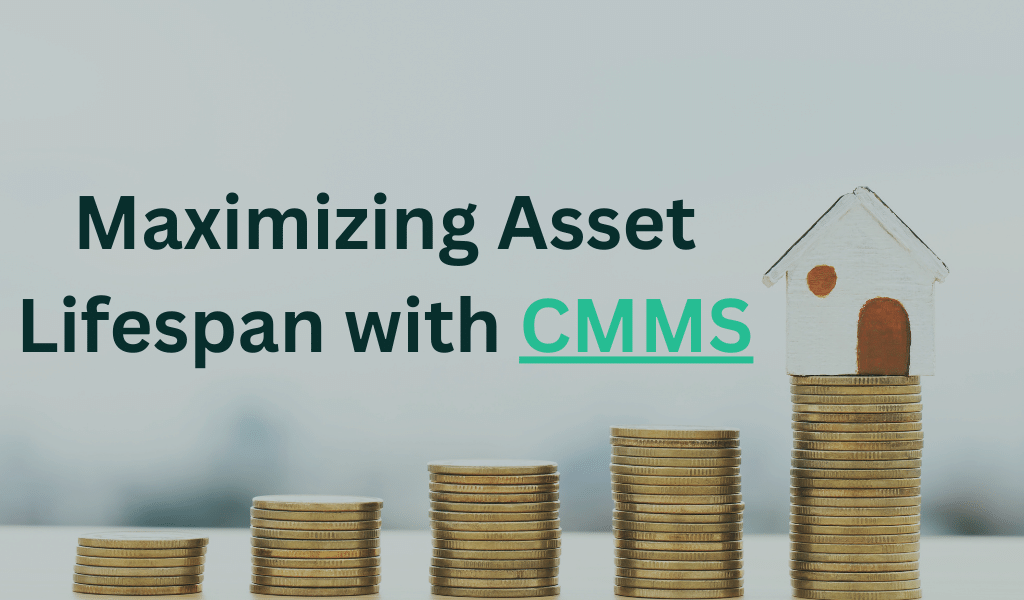Get a Free WorkTrek Demo
Let's show you how WorkTrek can help you optimize your maintenance operation.
Try for freeMaximizing Asset Lifespan with CMMS – As an entrepreneur, you’re looking for ways to maximize profits and minimize costs. One of the keys is proper wealth management – an often overlooked aspect of running a successful business. By implementing an effective maintenance and procurement strategy, you can extend the useful life of your assets and save your business money in the long run.
The foundation of any business is your asset. In the current economic climate, there is no room for downtime, lost productivity, or poor quality. Maintenance teams are valued for their ability to keep assets running, while businesses seek to extract as much value as possible from their assets. Therefore, companies need to invest time in asset management (CMMS).
What Is An Asset?
An asset is an item of value owned by an organization or individual. Assets are divided into tangible assets (physical assets such as land and machinery) and intangible assets (information technology assets such as copyrights, trademark rights, and computer software).
Within tangible assets, there are two subcategories: current assets (cash, inventory) and fixed assets (equipment, buildings, machinery, and other physical resources used in the operations of a business that are unlikely to be sold). When we talk about asset lifecycle management, we’re talking about managing the lifecycle of fixed assets.

What Is Asset Management?
Asset management in the financial industry is related to investment management. Digital asset management is a solution for storing and organizing media files. Asset management in an industrial environment is the process of maximizing the value of assets most economically during the life cycle of a company. In asset management, “asset” refers to everything tangible, including machines, buildings, cars, tools, and real estate.
Why Asset Management Matters?
Asset management is critical to any business, regardless of size or industry. At its core, asset management involves the maintenance and procurement of equipment, machinery, and other physical assets to ensure they operate efficiently throughout their lifecycle.
Proper asset management can help businesses save money by reducing downtime from equipment failure and minimizing repair costs. It can also extend the useful life of assets beyond expectations without regular maintenance.
Additionally, effective asset management improves workplace safety by identifying potential hazards before they occur. By maintaining accurate records of all assets and tracking their usage over time, organizations can make informed decisions about when to upgrade or replace obsolete equipment.
In short, investing in proper asset management is a smart move for businesses looking to increase efficiency and reduce overall costs. With a sound maintenance and procurement work strategy, companies can expect longer-lasting assets that deliver consistent results day in and day out.

What Is Asset Maintenance?
Asset maintenance is the process of maintaining and repairing physical assets such as equipment, facilities, and systems to ensure they are in good working order and function as designed. This can include activities such as inspection, cleaning, lubrication, repair, and replacement, as well as implementing a preventative maintenance program to identify and resolve potential problems before they arise.
Effective asset maintenance is important for the following reasons:
- It increases efficiency and reduces the risk of equipment failure or downtime.
- Reduce the risk of accidents or injuries due to equipment or system failure.
- Extend the life of your assets by helping you detect problems before they become more serious.
- Reduce maintenance costs because you can identify potential problems before they occur.
- Increased asset value, as well-maintained assets command higher prices when sold or leased. Get better prices when selling or renting.
Asset maintenance can be performed by an in-house maintenance team or outsourced to a professional maintenance company. The specific approach to asset maintenance depends on the type and size of the asset and the resources and expertise available.
Asset Maintenance Management vs. Asset Management: What’s the Difference?
Although the name may be misleading, asset maintenance management strategies should not be confused with asset management strategies.
Although the two concepts complement each other, they are not the same.
Asset management is a management system that requires input from all departments involved in the business process (maintenance being one of them).
Every aspect of the asset lifecycle – from research to acquisition to disposal – is part of an overall asset management strategy. In this strategy, departments such as planning, production, maintenance, and accounting work together to assess each asset’s cost management, value, risk, and performance.
Asset maintenance management focuses on performing maintenance activities and coordinating maintenance resources (including spare parts, labor, budget, etc.). The strategy can be viewed as a smaller, more defined component of wealth management.
Maintenance stems from the need to keep equipment running, update maintenance schedules, and control costs as much as possible. However, access to asset management is critical to achieving maintenance excellence.
If the goal is to optimize asset availability throughout its lifecycle, reduce repair costs, increase productivity, and comply with regulations, you must follow resource management principles to help define the best strategy to apply to each asset to achieve the end goal.

The better your asset management strategy, the lower the cost of maintaining it.

Life Cycle Management
Life cycle management refers to managing the entire life cycle of assets from acquisition to disposal. This can help businesses make more informed decisions about when assets need to be repaired, replaced, or disposed of, based on their condition and value.
Currently, these trends in asset maintenance focus on Maximizing Asset Lifespan with CMMS using advanced technologies and methods to optimize asset performance and value. By using these technologies and methodologies, organizations can reduce maintenance costs, increase efficiency and productivity, and improve safety and compliance.
What Are The Basic Components Of An Asset Maintenance Management Strategy?
An AMMS (Asset Maintenance Management Strategy) can be said to be truly effective when it enables you to monitor, manage and control the following five basic components that help fully characterize the assets held by an organization, namely:
Identification – Not all assets of a company can be managed and maintained in the same way. Therefore, it is essential to properly identify all assets for which you are responsible and define relative importance levels to choose the most appropriate maintenance strategy.
Location – To properly manage an asset, it is necessary to know its exact location. However, the company’s resources are likely not all concentrated in the same place. Some organizations base their business on using mobile assets or resources spread across multiple regions. To more easily locate assets to manage, many professionals in the industry rely on GIS (Geographic Information System) and GPS (Global Positioning System) technologies.
Condition – Knowing the shape of an asset is critical to planning appropriate management, maintenance, and disposal strategies. Status information can be collected manually through visual inspection or direct monitoring through smart sensors.
Maintain – Depending on the nature, location, and condition of each asset, an appropriate maintenance plan can be developed. It is important to identify which are the most critical assets requiring preventive maintenance and which can be managed with simple corrective maintenance. Using a CMMS system (Computerized Maintenance Management System) will help to simplify and automate all maintenance management operations.
Cost – Plant performance tends to decline over time as operating costs increase. The right asset maintenance management strategy can maximize the useful life of resources and identify potential savings, thereby minimizing management costs.
Try now for free
Learn more about how WorkTrek CMMS software can help industries track and manage maintenance activities efficiently.
The Management Connector To Empower Your Corporate Assets
The increase in the complexity of the plants and the need to minimize downtime make it essential to have a great ability to coordinate and share and preserve knowledge.
It is no longer possible to base decisions on estimates or impressions but all questions relating to maintenance must be answered based on exact numbers interpreted through reports and talking graphs. The interventions can no longer only be carried out following a breakdown or scheduled but must be carried out in advance according to optimized predictive models.
IT support that acts as a connector and facilitator of management becomes indispensable for providing the right information at the right time, managing people, deadlines, and interventions, and providing decision support.
CMMS is an essential tool for keeping assets efficient, productive, and profitable. Fundamental for management, monitoring, archiving, analysis, and, in general, for supporting the entire decision-making process. It must be an easy and intuitive tool with an optimal user experience that allows easy adoption by maintenance personnel, a facilitator, and not a complication of the daily operations of maintenance technicians and production workers.
The CMMS is a driving force to increase communication between those who work in maintenance at all levels. One of the goals is to get people to share information and knowledge related to the operating process to be faster, more versatile, and work smarter and more fluidly.
The CMMS is a technological tool that enhances people’s work by making it safer and more efficient.

The Importance Of CMMS
The use of maintenance management software is essential to effectively monitor and manage maintenance processes. Maintenance management software allows you to plan maintenance activities, including execution times and responsible employees, efficiently and ensure that they are performed promptly.
In addition, maintenance management software helps reduce maintenance costs and productivity losses. This software provides a detailed overview of system health, including failures and malfunctions, enabling technicians to identify root causes of problems and perform corrective or preventive maintenance.

Maintenance management software also allows you to manage your spare parts inventory accurately. Thanks to these software solutions, maintenance activities can be planned efficiently, the spare parts inventory can be managed accurately and maintenance costs can be reduced.
Features Of CMMS
CMMS must be designed with specific features to meet the needs of maintenance technicians and maintenance task managers. Among the important features are:
Planning and scheduling: CMMS allows you to plan maintenance activities based on system and customer needs. Planning can include scheduling maintenance tasks, allocating resources, and tracking progress.
Monitoring and reporting: CMMS allows you to monitor ongoing maintenance activities, resource levels, and system health. The reporting functionality allows you to collect detailed information on failures and malfunctions of the system, and to create detailed reports for the maintenance activities performed.
Warehouse management: CMMS allows you to manage your spare parts inventory accurately. This includes managing inventory, scheduling purchasing activities, and ordering spare parts.
Automation: CMMS helps automate maintenance tasks and minimize the need for manual intervention. This includes automatic scheduling of maintenance tasks, sending notifications to maintenance technicians, and automatic reporting.

Functions Of Asset Maintenance Management In CMMS
Key features of asset tracking in a CMMS include:
- Asset Registration: Asset tracking in a CMMS usually starts with registering the asset in the system. This includes entering information about the facility such as B. make and model, serial number, location, and other relevant details.
- Maintenance and Repair Tracking: A CMMS can be used to track the maintenance and repair history of any asset, including the type of work performed, parts used, and repair costs. This information can be used to optimize maintenance planning and extend asset life.
- Asset Location Tracking: Used to track the location of each asset, making it easier to locate and transport assets when needed.
- Asset Availability Tracking: A CMMS can be used to track the availability of any asset, including whether the asset is in use or available for maintenance or repair.
- Performance Tracking: Used to track the performance of each asset over time, including metrics such as downtime and frequency of repairs. This information can be used to identify trends and issues that may need to be addressed.
Advantages of Asset Maintenance Management
There are several advantages to using a CMMS for asset tracking:
- Improved asset visibility: CMMS asset tracking provides a centralized digital record of all assets, making it easier to locate and track their usage, maintenance history, and current condition.
- Increased efficiency: By automating asset tracking and maintenance planning, a CMMS can help streamline asset management processes and reduce the time and effort spent on asset tracking and management.
- Reduced downtime: By tracking equipment maintenance and repair history and proactively scheduling maintenance, a CMMS can help reduce the risk of unplanned downtime due to equipment failure.
- Improved asset utilization: By tracking asset usage and availability, a CMMS can help organizations optimize asset utilization and use resources more efficiently.
- Improved asset security: A CMMS can help organizations track asset location and usage, reducing the risk of theft or unauthorized use.
- Cost savings: By simplifying maintenance planning and reducing downtime, a CMMS can help companies reduce maintenance costs and extend the useful life of assets.

Invest in Asset Management Software (CMMS)
One of the best practices to adopt when managing assets is to invest in CMMS (Computerized Maintenance Management System) software that supports the most critical asset management needs. A robust CMMS system provides a central database for storing supplier information, warranties, site leases, and more. It will also provide tools to simplify maintenance workflows.
Overall, deploying an asset-tracking CMMS can help organizations improve the efficiency and effectiveness of asset management processes, reduce costs, and maximize asset value. CMMS asset tracking provides the current status of assets, providing vital information for your company.
Asset tracking is very helpful for CMMS software to make maintenance operations more efficient. Choosing the right CMMS software system for your company’s maintenance needs is always crucial.
And remember, if your team doesn’t have the bandwidth to harness this powerful tool fully, there’s always the option to hire a part-time to manage it. This way, you can get the most out of CMMS without overstretching your internal resources. Don’t let the complexities of CMMS deter you—it’s an incredible asset optimization tool you shouldn’t miss.









